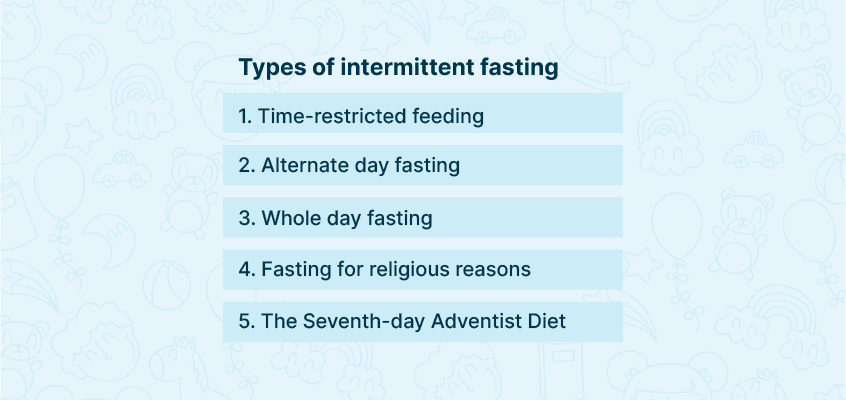Introduction
Fasting is the controlled, voluntary abstinence from food for various reasons. Fasting on auspicious days has been a religious practice in India since the beginning of time. Although there are many fasting methods, intermittent fasting has shown the best results in losing weight and is easy to start.
Our Wellness Programs
What is intermittent fasting?
It is a meal pattern in which fasting and eating windows alternate. The goal is not to eat or not add calories during a fixed fasting window and give the body enough time to burn fat. An individual can consume food for calorie requirements during a fixed eating window. Intermittent fasting does not state what foods to eat but rather when.
The body secretes insulin after each meal, and eating throughout the day keeps insulin levels high. Increased insulin causes insulin insensitivity, leading to increased weight, pre-diabetes, and diabetes type 2. Intermittent fasting has become popular as it is an excellent and cheap way of losing fat without losing muscle density. Fasting also detoxifies the digestive system, which helps increase immunity, muscle tone, and muscle density. This fasting method has both pros and cons.

Looking for services related to this subject? Get in touch with these experts today!!
Experts

Sapna Zarwal

India
Psychologist
Experience: 19 years

Munira Soni

India
Psychologist
Experience: 7 years

Manveen Kaur

India
Psychologist
Experience: 9 years
Types of intermittent fasting
1. Time-restricted feeding
2. Alternate day fasting
3. Whole day fasting:
4. Fasting for religious reasons
The Seventh-day Adventist Diet
Time-restricted feeding: It is well-known intermittent fasting and the easiest. It was also known as the 16:8 diet. Food intake is restricted to less than three meals per day and consumed in a time-constrained regime.
Alternate day fasting: It is the ADF method. There is a 24-hour feast day followed by a 24-hour fast day for this type.
Whole day fasting: It is popularly known as the 5:2 diet. In one week, five days are feeding days and one to two days can be fasting days.
Fasting for religious reasons: This is present in Muslim, Hindu, Christianity, and many other traditions and religions. During Ramadan, feeding takes place after sunset and before sunrise. As a result, people observe 12 hours of fasting regimen.
The Seventh-day Adventist Diet: This method consumes two meals per day. Meal consumption is usually between 12 PM and 6 PM and often includes green leafy vegetables, fruits, and nuts.
The body’s response to Intermittent fasting
- Physical activity, the brain, and other vital organs require glucose consumption to keep going. The food digested is converted into glucose, present in abundance after consuming meals. When there is excess glucose, the body stores it as glycogen in the liver or converts it to fat, which causes weight gain and other health problems.
- During the fasting state, roughly eight hours after eating, glucose levels are low, and the body gets the required glucose from the stored glycogen. Glycogen is broken down (a process known as glycogenolysis) and converted to glucose (known as gluconeogenesis). The body will use this glucose as fuel.
- The body lacks stored glucose during intermittent fasting or prolonged fasting, so ketogenesis occurs. The breakdown of fat present in adipose tissue releases ketone bodies.
Intermittent fasting for women
Body types differ between men and women. As a result, intermittent fasting has a different effect on women. Women differ from men due to genetic differences and female sex hormones. Fasting can interfere with the reproductive hormone system, which is critical in women. Female hormones are sensitive to calorie restriction, so there should be no extended fasting hours. Intermittent fasting during childbearing years may cause menstrual cycle disruptions, hair loss, fatigue, and sleep problems, among other things. Recommended fasting for females is around 12 to 14 hours per day, in which females can safely fast while remaining hydrated. It is critical to consume a nutritious diet rich in healthy fats during this time. Females in their late 40s and early 50s benefit greatly from intermittent fasting because their reproductive hormonal makeup changes after menopause. Intermittent fasting should be avoided by pregnant women, breastfeeding, teenage girls, underweight, type-1 diabetics, have fertility issues, or eating disorders.
When considering fasting, please consult a doctor to know its suitability.
Intermittent Fasting a Scientific Method for Losing Weight?
- During intermittent fasting, ketogenesis occurs since the body is devoid of stored glucose. Ketone bodies function similarly to reserve fuel to provide the required energy to the body. As a result, the body will begin to burn fat, and eventually, there will be less fat, which helps lose weight.
- Intermittent fasting also helps reduce insulin levels. Insulin is a hormone that aids in glucose uptake into muscles and fat tissues. It also aids the body in producing fatty acids stored as fat. Excess glucose raises insulin levels in the body, resulting in increased fat production. Insulin levels are low during fasting, which inhibits fatty acid biogenesis. The body cannot produce fat, converting existing fat to ketone bodies, using it as an alternative energy source. As a result, there is a more significant loss of fat, which helps weight loss.
Yes! Intermittent fasting is scientifically proven to promote weight loss and cleanse the body physically and mentally. However, it is not a guaranteed method as different people have different body metabolisms, and one type of fasting may not fit everyone.
How to fast intermittently?
- Time-restricted feeding: In this method, if someone consumes food at 7 PM, they can have their meal only the next day at 11 AM. It is the easiest as most fasting time is at night during sleep. The goal here is to extend the fasting period, done regularly. In 24 hours, the person will fast for 16 hours and eat in the remaining 8 hours window.
- Alternate day fasting: People can eat whatever they want on a feast day. There are no restrictions on the quantity or the food’s timing. During the day of the fast, they consume nothing but water. The other variant of this fasting is that around 500 calories of food are allowed.
- Whole day fasting: On feeding days, people consume regular food, whereas, on fasting days, people consume only 20–25 per cent of total daily calorie requirements.
Conclusion
Intermittent fasting is a fantastic idea with promising results. However, it should not be a mandatory part of our daily lives for a prolonged period because long-term consequences are unknown. However, in a society prone to overeating, a fasting day won’t hurt and will most likely help. Continue to be healthy and happy.

















